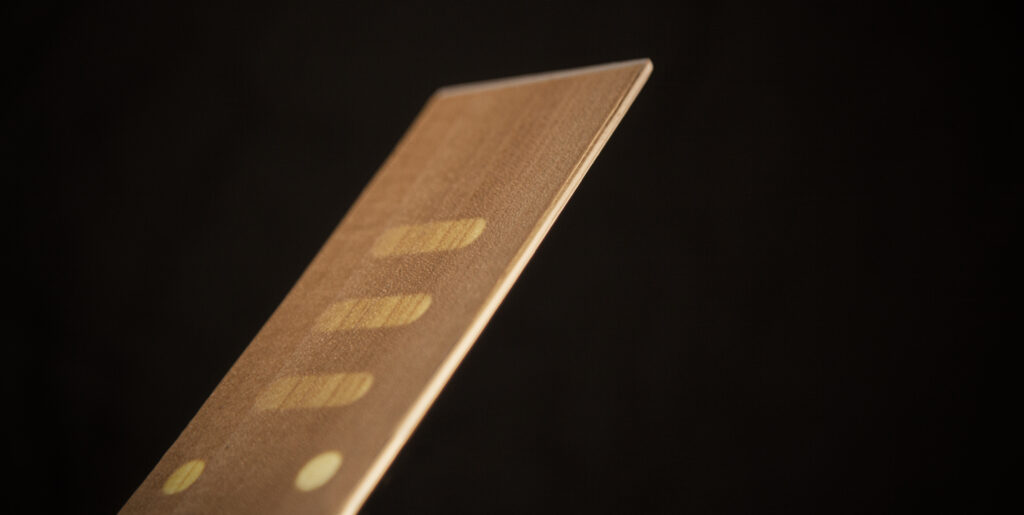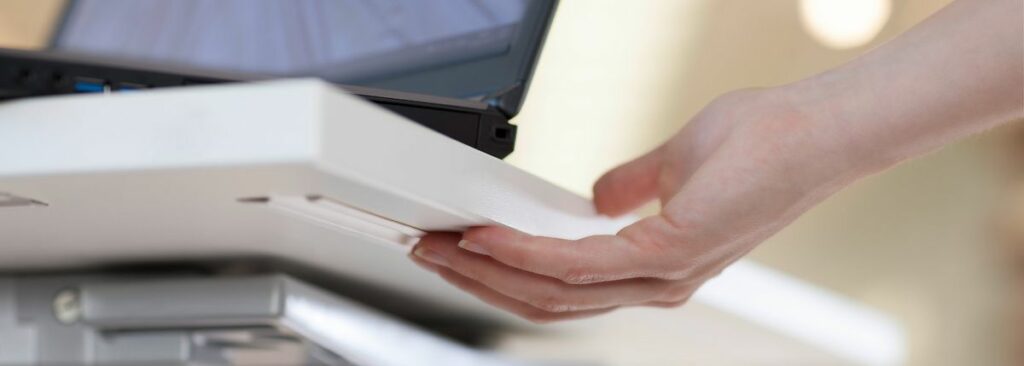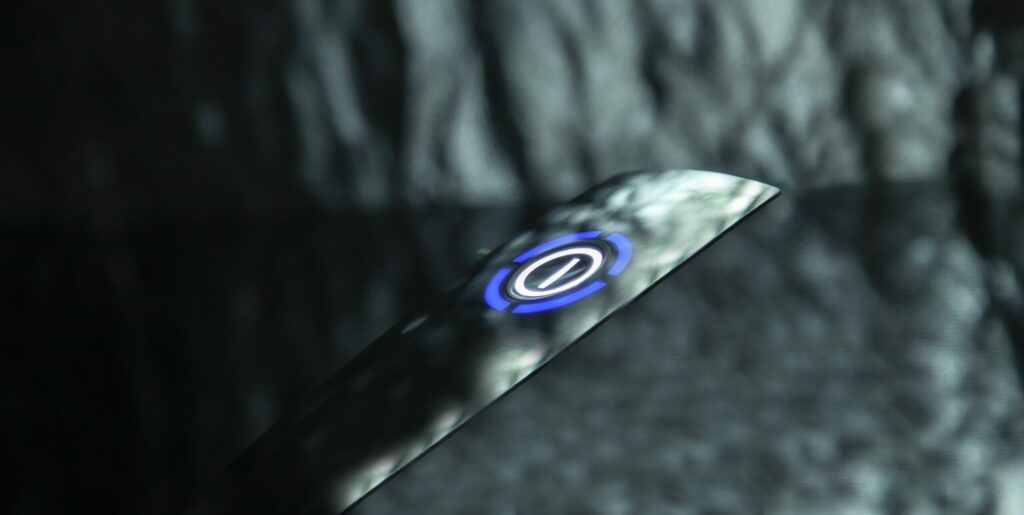Table of Contents
Furniture surfaces as user interfaces
In the rooms of our living and office environment, we find many surfaces that offer themselves completely naturally and intuitively as touch controls. Controlling the work lighting in the kitchen via the underside of the kitchen wall units, replacing the light switch with a touch control in the door frame, adjusting the height of the office desk on the underside of the table. Wouldn’t it be interesting to interact with the technology in the rooms via such surfaces by simply swiping or touching?
plastic electronic’s touch control solutions are ideal for such interaction areas in the living room or in the office. They can be applied over a large area and blend seamlessly into furniture surfaces and door frames, for example. All surfaces in rooms can thus become user interfaces. Completely reduced and hidden as Shy-Tech. Without influencing the design in the slightest. Or even as an additional optical highlight with high-quality lighting on the surface.
Touch control with generous gestures
Surfaces in living or office spaces are usually generously dimensioned. On such large areas, touch control solutions are particularly attractive when enabling operation along an edge or area of any length and in any position in the same way.
An example from the kitchen
The LED work lighting can be switched on and off or dimmed along the entire front edge of the upper cabinets in a kitchen unit. A quick tap turns the light on, a swipe to the left dims the light down, a swipe to the right up. A longer tap turns the light off. Each gesture can be executed or started at any point.
A brief explanation for those interested in technology:
For such operating solutions, individual circuit carrier films with a length of 675 mm, equipped with touch sensors and evaluation electronics, are connected to one another by a simple bus system and can thus be combined to form meter-long touch control surfaces.
Illumination on large surfaces
Lighting elements seamlessly integrated into the surfaces of our living and office environments support intuitive operation over large areas. They serve as an indicator of where and how to operate, and provide visual feedback when operation has taken place. Or they are simply an optical highlight of the surface as ambient lighting without any function.
The surface must be transparent (translucent) in those places where there are lighting elements. Materials such as plastics, wood veneer or, of course, glass are suitable for this. Translucent areas can be designed in such a way that they are only visible when the lighting is activated (disappearing effect).

Foils as circuit carriers
The seamless integration of touch control and lighting in surfaces is made possible by circuit carrier films. This technology combines the functions of the printed circuit board and the electronic components with a special light management system in a thin composite film. By using foils, even large areas in the living or office area can easily be equipped with electronic functions.
Tips for designing the touch control
If you now want to know how you can best design the seamless user interface with touch controls, then simply download our free plastic electronic Design Guide. You will find valuable and practical information in it.
About SMARTSENSE
Together with Rehau, for example, plastic electronic has developed a new operating solution for height-adjustable tables. With SMART SENSE, the height of conference tables can be adjusted from any position around the table. The operating area is characterized by a plastic profile with a trough-like recess that is embedded in the underside of the tabletop. As a result, the optimal position for operation can be felt with the fingers and carried out safely along the trough. Together with the office furniture manufacturer König + Neurath, the revolutionary operating system has already been integrated into many high-quality conference tables.




